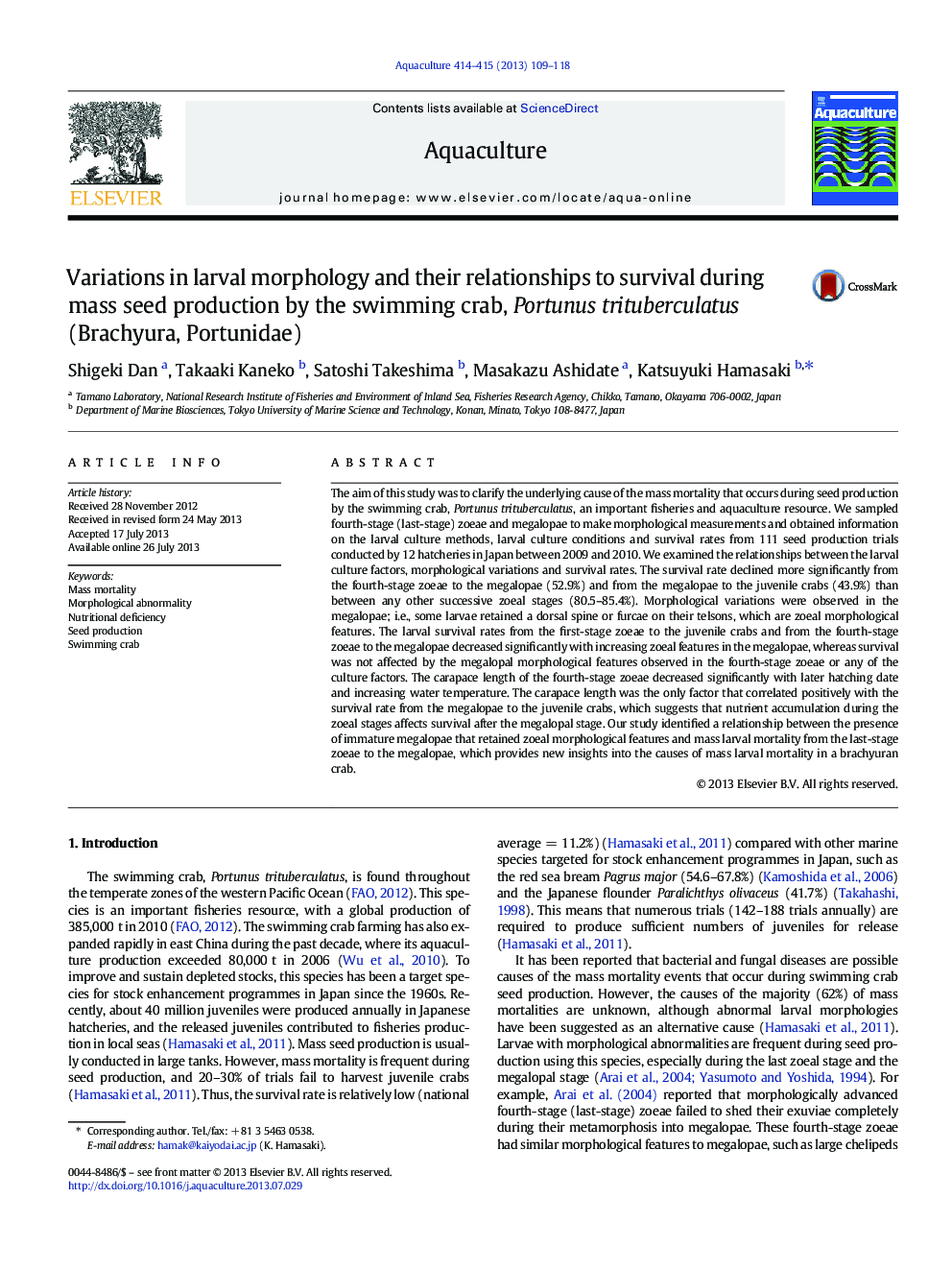| Article ID | Journal | Published Year | Pages | File Type |
|---|---|---|---|---|
| 8495425 | Aquaculture | 2013 | 10 Pages |
Abstract
The aim of this study was to clarify the underlying cause of the mass mortality that occurs during seed production by the swimming crab, Portunus trituberculatus, an important fisheries and aquaculture resource. We sampled fourth-stage (last-stage) zoeae and megalopae to make morphological measurements and obtained information on the larval culture methods, larval culture conditions and survival rates from 111 seed production trials conducted by 12 hatcheries in Japan between 2009 and 2010. We examined the relationships between the larval culture factors, morphological variations and survival rates. The survival rate declined more significantly from the fourth-stage zoeae to the megalopae (52.9%) and from the megalopae to the juvenile crabs (43.9%) than between any other successive zoeal stages (80.5-85.4%). Morphological variations were observed in the megalopae; i.e., some larvae retained a dorsal spine or furcae on their telsons, which are zoeal morphological features. The larval survival rates from the first-stage zoeae to the juvenile crabs and from the fourth-stage zoeae to the megalopae decreased significantly with increasing zoeal features in the megalopae, whereas survival was not affected by the megalopal morphological features observed in the fourth-stage zoeae or any of the culture factors. The carapace length of the fourth-stage zoeae decreased significantly with later hatching date and increasing water temperature. The carapace length was the only factor that correlated positively with the survival rate from the megalopae to the juvenile crabs, which suggests that nutrient accumulation during the zoeal stages affects survival after the megalopal stage. Our study identified a relationship between the presence of immature megalopae that retained zoeal morphological features and mass larval mortality from the last-stage zoeae to the megalopae, which provides new insights into the causes of mass larval mortality in a brachyuran crab.
Related Topics
Life Sciences
Agricultural and Biological Sciences
Aquatic Science
Authors
Shigeki Dan, Takaaki Kaneko, Satoshi Takeshima, Masakazu Ashidate, Katsuyuki Hamasaki,
